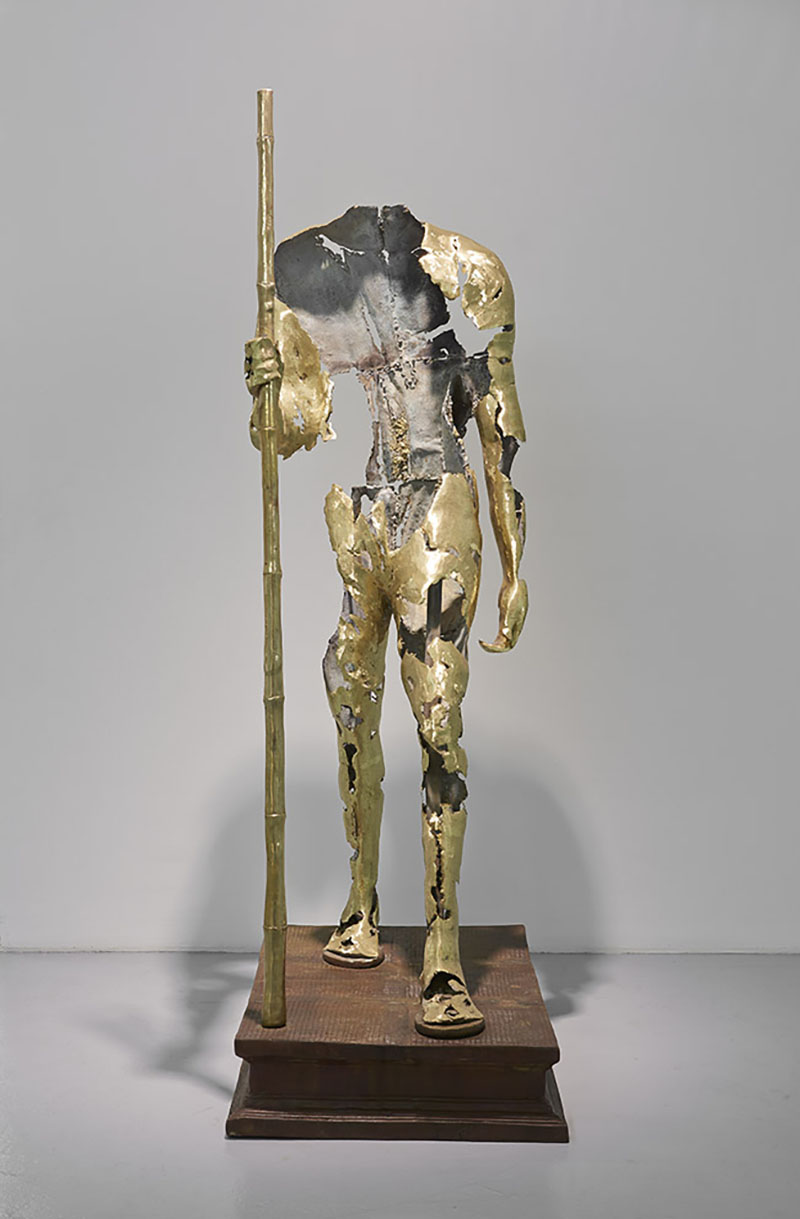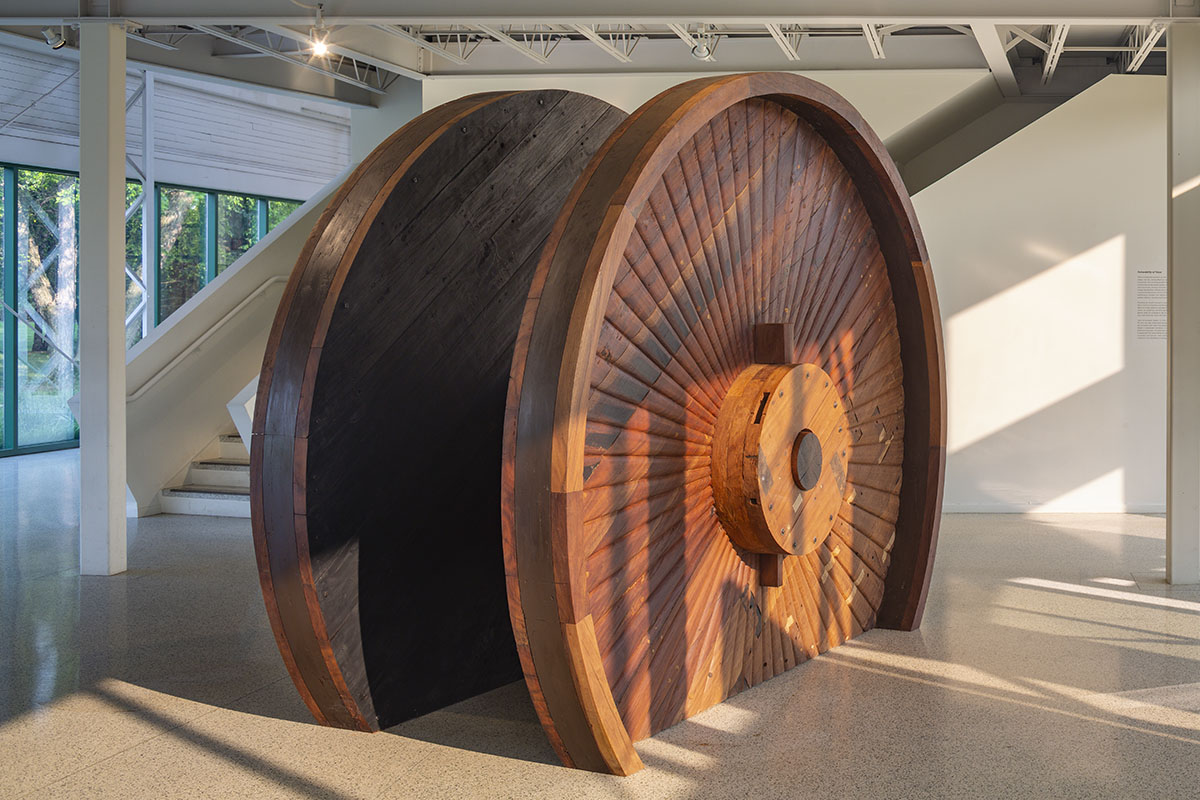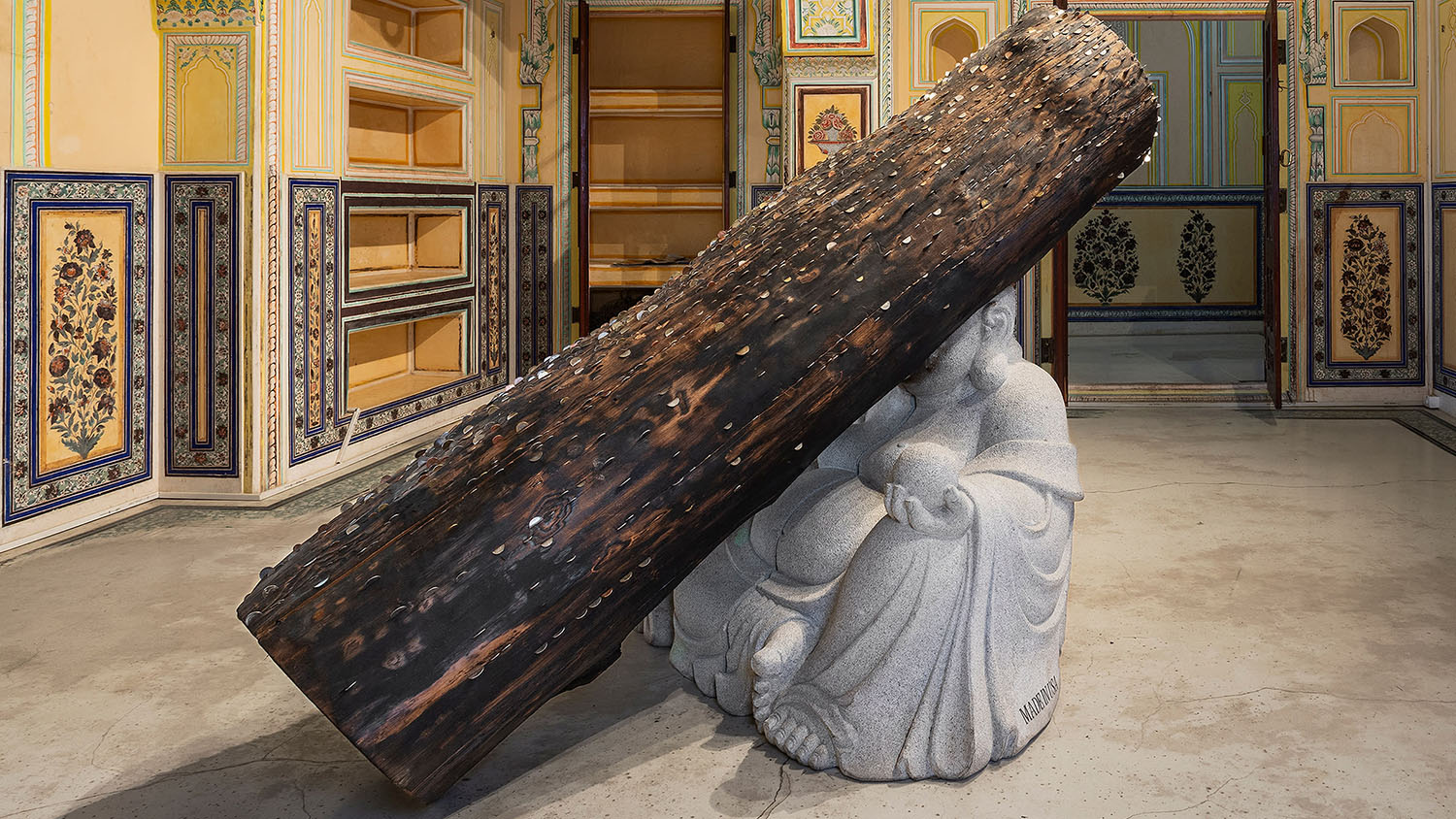ARTICLE
Tallur LN
The most monumental of his works produced from 2012–13, and first shown at the Kochi-Muziris Biennale in 2012, Veni, Vidi, Vici is a play on the historical transactions of power through trade and colonialism. It consists of a life-scale roof of terracotta tiles upon which are interspersed clay figurines of Hatha yoga practitioners. In its allusions — to trade and colonial enterprise, to the Western gaze (through the ethnographic figures) and the appropriation (and subsequent revaluation) of Indian cultural practices — the work reveals the enduring value of power in historic and contemporary contexts. When it was shown at the Art Basel in Switzerland in 2013, it was viewed as a tongue-in-cheek response to the colonial hegemonies of India’s past.
Solo exhibitions of Tallur’s work have taken place in Germany, South Korea, the United States, India and China. The 7th Asia Pacific Triennial of Contemporary Art (APT7), Queensland Art Gallery, Australia; The Empire Strikes Back: Indian Art Today, Saatchi Gallery, UK; and Critical Mass: Contemporary Art from India, Tel Aviv Museum of Art, Israel, are some of the most prominent shows that have featured his work.
In 1999, early in his career, Tallur won the prestigious Bose Pacia Emerging Artist Award in New York. In 2003, the Sanskriti Foundation, New Delhi, presented him with the Sanskriti Award for Art. His exhibition Quintessential, held in 2011 at the Dr. Bhau Daji Lad Museum drew much critical acclaim, leading to his winning the Skoda Prize for Art the next year.
As of writing, Tallur works between India and Korea.
Bibliography
Our website is currently undergoing maintenance and re-design, due to which we have had to take down some of our bibliographies. While these will be re-published shortly, you can request references for specific articles by writing to hellomapacademy@map-india.org.








![The façade of the Maneckji Seth Agiary, a Zoroastrian fire temple, is a standout example of the popularity of the Persian Revival Style in Western India in the 19th and 20th centuries. This style was often seen in the architectural patronage of the Parsis, who emerged as one of the most influential mercantile communities of British India. Popular motifs of this style, like the mythical lamasus (winged bulls with human heads) and the faravahar (a winged guardian spirit in Zoroastrianism), drew on the historical art and architecture of the Achaemenid and Sasanian empires from sites like Persepolis, Bisotun, Taq-e Bostan, Naqsh-e Rostam and Naqsh-e Rajab in Persia.
The Parsi community’s adoption of this style occurred largely due to their networks of global commerce and politics, allowing them to access and translate research of ancient Persia into visible symbols that underlined their association with antiquity, imperial power, and art.
نمای آتشکدهی زرتشتی مانِکجی سِت نمونهی بارزی از رواج سبک «احیای [معماری] ایرانی» در غرب هند طی سدههای نوزدهم و بیستم است. این سبک غالباً در بناهایی دیده میشد که پارسیان، از بانفوذترین جوامع بازرگان در هند بریتانیا، بانیشان بودند. نقشمایههای محبوب این سبک، مانند گاو بالدار اساطیری (لاماسو) و فَروَهَر (روح بالدار نگهبان در دین زرتشت)، برگرفته از هنر و معماری شاهنشاهی هخامنشی و ساسانی، در جاهایی چون تخت جمشید و بیستون و طاق بستان و نقش رستم و نقش رجب، بود.
اقتباس جامعهی پارسیان از این سبک بسیار مرهون روابط گستردهی تجاری و سیاسی آنها بود که دسترس به پژوهشها دربارهی ایران باستان و برگردانیدن آنها به نمادهای بصری را ممکن میکرد و بر پیوند پارسیان با دوران باستان و قدرت شاهنشاهی و هنر تأکید میکرد.](https://mapacademy.io/wp-content/plugins/instagram-feed/img/placeholder.png)
